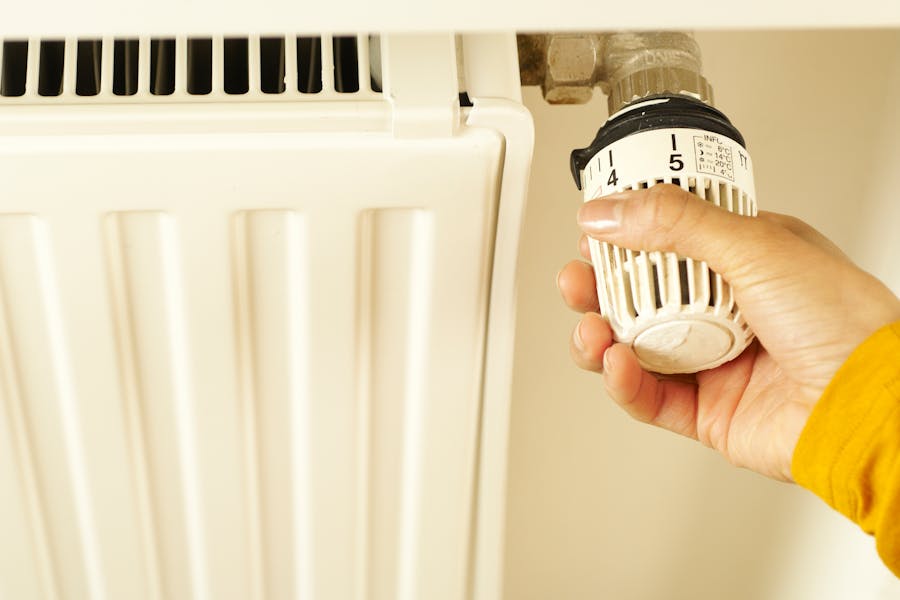As the air turns crisp and the days grow shorter, fall quietly signals the arrival of winter. While autumn has its charms—golden leaves, cozy layers, and pumpkin-spiced everything—it also offers a valuable opportunity to prepare for the upcoming cold season. Tackling key maintenance tasks in the fall can save you from stress, expensive repairs, and discomfort when the cold really sets in.
This article covers eight smart, doable fall tasks that will make your winter not just easier—but warmer, safer, and less expensive. Whether you’re a homeowner or renting, there’s something here for everyone to check off before the snow starts falling.
- Schedule a Heating System Checkup
Your heating system is one of the most important parts of your home once winter hits. Fall is the ideal time to ensure it’s working efficiently. If your unit is more than 15 years old or you’ve noticed it heating unevenly or making unusual noises, it may be time to consider an upgrade. Rising energy bills can also be a red flag that your system is working harder than it should.
Choosing a new heating system depends on several factors. How big your home is, how well it holds heat, and the weather in your area all help decide which heating system is best. Some homes are better suited for forced air systems, while others might benefit from radiant heating or heat pumps. A licensed HVAC technician can evaluate your current setup and help you determine the best heating system for your home.
Even if you don’t need a replacement, regular maintenance, such as changing filters and checking ductwork, can improve performance and extend the life of your system.
- Seal Drafts and Insulate
A drafty home loses heat fast and drives up energy costs. Small cracks around windows and doors may seem harmless, but they allow cold air to sneak in and warm air to escape. Early fall is the perfect time to check for leaks and seal them before winter winds arrive. Use weatherstripping to line doorframes, apply caulk around window edges, and install door sweeps to block drafts.
Insulation is just as important. Adding more insulation in these areas, such as attics, basements, and crawl spaces, can make a noticeable difference in your home’s warmth and energy efficiency.
- Give the Gutters Some Attention
Leaves are beautiful on trees, but problematic in your gutters. When gutters become clogged with debris, rain and melting snow can overflow, damaging your roof, siding, and foundation. To avoid these issues, clean out your gutters once most of the leaves have fallen.
While you’re at it, check the condition of the gutter system. Make sure it’s securely fastened and that water drains properly away from your home. Downspout extenders can help if water tends to pool near your foundation. Installing gutter guards is another smart move if you want to cut down on the amount of seasonal cleaning required.
- Protect Exterior Plumbing
Frozen pipes are more than just a problem—they can break and cause big, expensive damage. During fall, take the time to shut off and drain outdoor faucets and sprinkler systems. Take off your garden hoses and keep them inside so they don’t freeze and break. If you have exposed pipes in your garage or basement, wrap them in foam insulation or use heat tape to keep them from freezing.
Taking these steps now could save you from an unexpected plumbing disaster in the middle of a snowstorm.
- Service the Fireplace and Chimney
If you own a fireplace, you probably want to enjoy it during winter. However, make sure you get it inspected. Wood-burning fireplaces can develop creosote buildup, which is highly flammable. Even if you don’t use your fireplace often, animals and debris can block the chimney, posing a fire risk.
Hire a certified chimney sweep to clean and inspect the chimney thoroughly. They’ll check for cracks, leaks, and blockages. If you have a gas fireplace, test the pilot light and make sure it ignites easily.
- Store or Service Outdoor Equipment
Before the first frost hits, take a good look at your outdoor tools and equipment. Gas-powered tools like lawnmowers, leaf blowers, and string trimmers need to be cleaned and drained of fuel before storing. Leaving fuel inside can cause the engine to gum up and lead to costly repairs in the spring.
Wash your tools well to get rid of grass, dirt, and sticky stuff before storing them. Sharpen blades if needed and lubricate moving parts. Once dry, store them in a dry shed or garage to protect them from moisture and rust.
Outdoor furniture also needs attention. Wash cushions and frames, and store them indoors if possible. If you don’t have space, use weatherproof covers to protect them through the winter.
- Check Your Roof and Attic Ventilation
Early fall is a great time to inspect your roof for any signs of wear or damage. Check your roof for broken or missing parts and places where water can sit. Binoculars can help you get a closer view without climbing a ladder, but it’s safest to hire a roofer for a full inspection.
Attic ventilation is another key issue. Without proper airflow, heat from inside your home can warm the underside of the roof, causing snow to melt and refreeze into ice dams. These dams trap water on your roof and can lead to leaks or structural damage. Clear soffit vents of insulation or debris, and make sure your attic insulation is thick and evenly spread.
- Prepare Your Landscape and Trees
Fall is also a critical time to get your yard in shape. Trees with weak or overhanging branches can become hazardous during winter storms. Snow and ice accumulation may cause limbs to snap and fall on your home, car, or power lines.
Walk around your property and look for dead limbs or branches that hang too close to the roof. Trim them back or hire a professional tree service to handle larger jobs. Also, rake up fallen leaves to avoid smothering your grass or causing slippery walkways.
Don’t forget to cover or bring in potted plants, and if you have young shrubs or perennials, consider using burlap wraps or mulch to protect them from frost.
Winter doesn’t have to catch you off guard. By using fall as your window for preparation, you can turn what might have been a season of scrambling into one of calm, comfort, and confidence. These aren’t just seasonal chores; they’re investments in peace of mind. So before fall slips away, make your checklist, set a weekend or two aside, and tackle these tasks head-on. You’ll thank yourself when winter arrives and your home is already prepared for whatever it brings.







